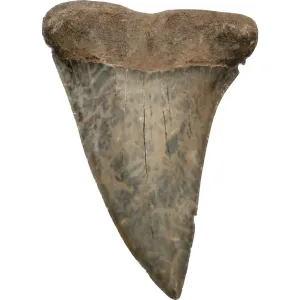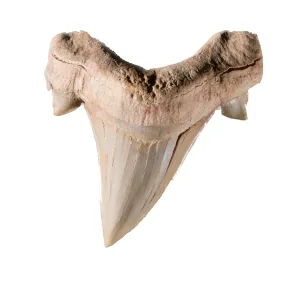Fossilized shark teeth provide valuable insights into prehistoric marine ecosystems and the evolution of these apex predators. Squalicorax, a genus of extinct sharks, lived during the Late Cretaceous period and is known for its characteristic triangular teeth. These teeth are frequently found in marine deposits worldwide, indicating Squalicorax’s widespread distribution.
The great white shark (Carcharodon carcharias) possesses serrated, triangular teeth ideal for hunting marine mammals. Fossilized teeth of the great white are relatively common in marine sediments, reflecting its ancient lineage dating back millions of years.
Megalodon (Carcharocles megalodon), the largest known shark to have ever existed, had massive, serrated teeth measuring up to 7 inches in length. Fossilized megalodon teeth provide evidence of its immense size and predatory prowess during the Miocene and Pliocene epochs.
The mako shark (Isurus spp.) is renowned for its slender, pointed teeth adapted for capturing swift prey. Fossil mako teeth are prevalent in marine sediments, indicating the long evolutionary history of this agile predator.
Otodus, an extinct genus related to modern mackerel sharks, existed from the Paleocene to the Miocene epochs. Its teeth are similar to those of the great white and megalodon, featuring serrated edges and a triangular shape.
Studying fossil shark teeth not only illuminates the diversity and evolutionary history of sharks but also provides crucial data for reconstructing ancient marine environments and understanding the dynamics of past ecosystems.


